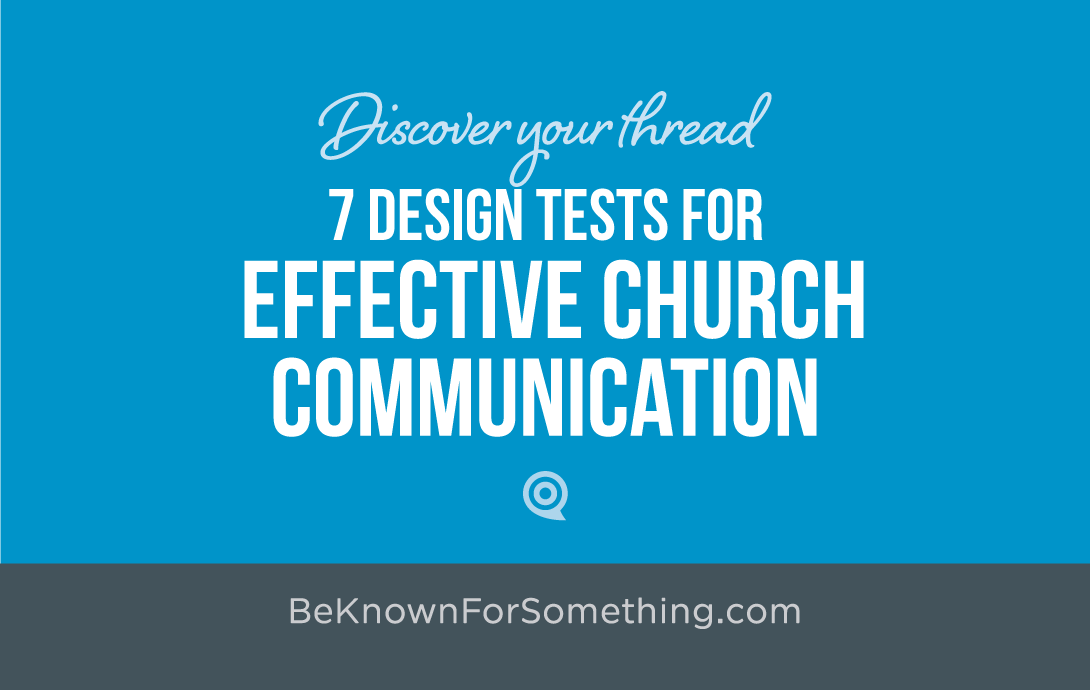7 Design Tests for Effective Church Communication

Many organizations try to communicate with their audience every day (design tests this!). A ton of messages! This noise causes people to choose whether to engage with content or simply ignore it because it doesn’t interest them. And all of this is done very quickly.
Your church is in the middle of this noise trying to push content. Will it be received? Usually, the design (layout) of the content is critical. Here are 7 design tests to ensure people will want to spend time with your communication:
- Is it clear who it’s intended for? People look at designed communication and within a few seconds, they determine if it’s for them. If it’s not clear, few people will try to figure it out. Say who your communication is for or show it in the visual.
- Is it clearly your brand? Your church should have a graphic standard that it follows. Without seeing your logo on it, people should know it’s from you. Be consistent with your use of design, colors, and fonts. If they attend your church they should like your branding and be attracted to it!
- Is there a priority to the communication strategy? When people look at your design, there should be a clear primary element, that leads to the secondary, and then to your tertiary elements. Usually, a headline is the first thing you want people to see, or maybe it’s the picture. Just never have competing elements! Know the clear 1, 2, and 3 of the design and eliminate competition by better sizing, colors, or placement.
- Is it calm? If everything is competing on the page or there are too many elements, your material will not feel welcoming. Simplify, flatten, and align elements in order to calm your design. More people will spend more time on a calm communication piece! This should be your goal!
- Does the visual add to the story or extend it? Hopefully, you’re using photos or illustrations since they attract the eye. But make sure they aren’t too busy and that it’s clear why the visual is used with the rest of the content. Even better? Have the visual extend the content so that you don’t have to say as much in words. Remember, a good image is worth 1,000 words.
- Is the content edited? Too much content will kill a design and most people will resist reading it all. When someone believes there’s too much, they’ll choose to ignore the entire message or scan across it for some understanding. What’s better? You do the editing. Remove redundancy and every unnecessary word. Think bullet points rather than paragraphs!
- Is there a call to action? Ask the “what now?” question with every design or communication. If someone chooses to engage with your design, you need to know what you want them to do next. Be clear! Often designers aren’t clear so it’s difficult to make the message clear. Ask! You can rarely go wrong sending them for more information on your website.
Want 25 Game-Changing Resolutions?
Related Posts

Christmas Church Communication Strategy: 3 Nativity Lessons
Christmas isn’t just another event on the calendar; it’s a strategic opportunity to communicate the Gospel to a world that’s

3 Church Leadership Skills That Transform Your Ministry
You didn’t accept a call to ministry just to maintain the status quo. You were called to lead to inspire,

How to Create a Church Marketing Strategy That Reaches Your Community
You’ve been called to lead a church that makes a difference in your city. That means developing a clear church

